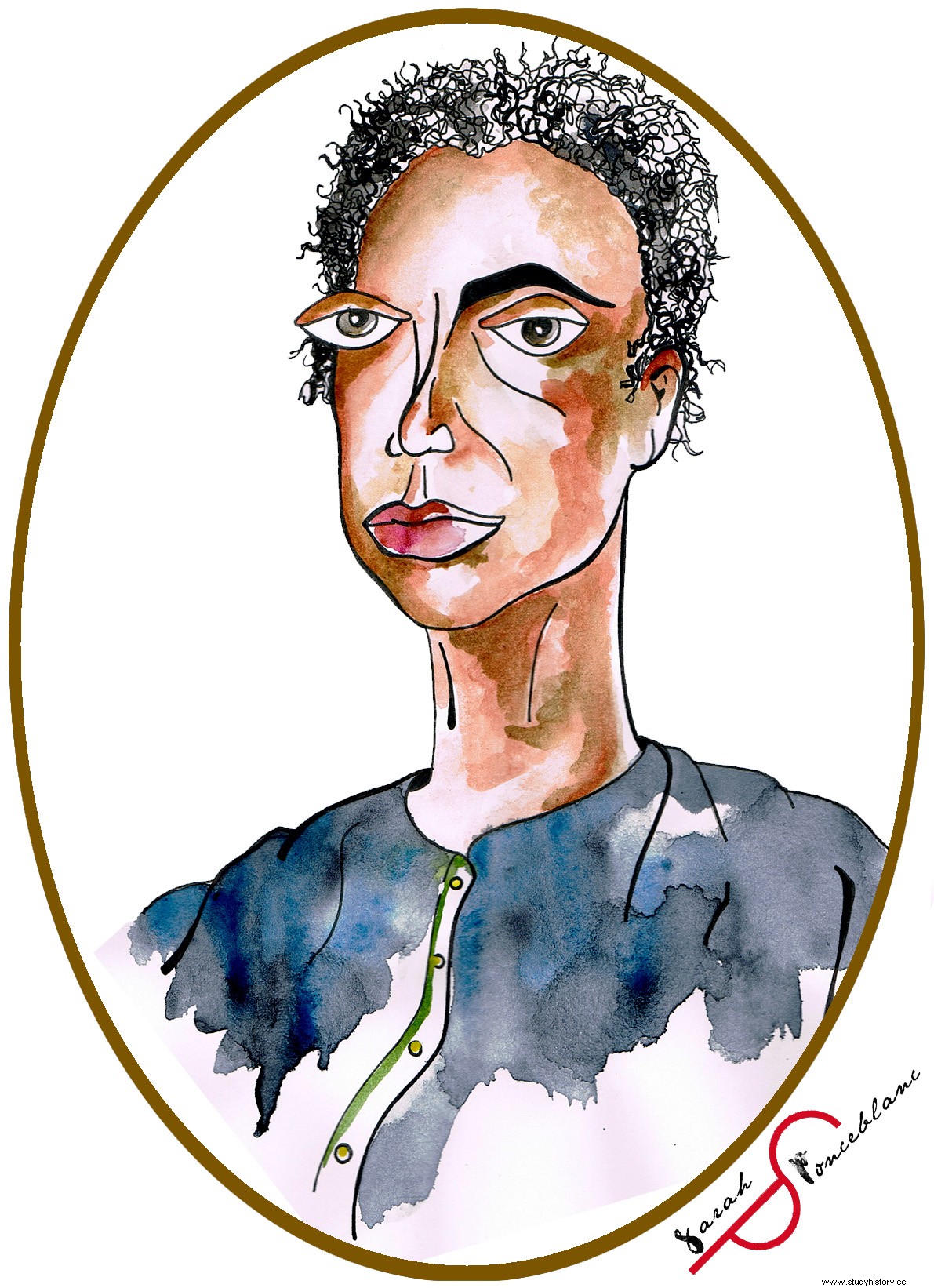Born a slave, Mary Prince (1788 –?) is the first to have testified to slavery through a book published in the United Kingdom. His autobiographical account had a decisive impact on the abolition of slavery in England.
The violence of the masters

Daughter of slaves, Mary Prince in 1788 in Bermuda. His father, a woodcutter, and his mother, a servant, are held by two different masters; Mary lives with her mother and her three brothers and two sisters with Captain Darrell, where she grows up with the child of the family. When she was twelve, she and her little sisters were sold the same day, each to a different master. Mary is bought by Captain John Ingham and his wife, who quickly prove to be harsh and cruel masters. The slaves are often whipped for trifles and Mary, injured, ends up fleeing. Her mother hides her and heals her wounds, but her father eventually finds her and brings her back to her master.
In 1806, John Ingham sold Mary to a salt marsh owner in the West Indies. Originally relieved to leave her master, Mary discovers a difficult and trying job there. Four years later, she follows her master to Bermuda and works for his daughter. In 1815, she was again sold and her new master, John Adams Woods, took her to Antigua as a domestic slave. Mary takes care of a young child, the house and the laundry. When her master is away, she earns a little money by doing housework or selling coffee and yams.
In 1817, Mary was baptized in a Protestant church and joined the parish, where she learned to read and took lessons. In 1826, she married Daniel James, a carpenter and former slave who bought his freedom thanks to the money raised by his work. This marriage strongly displeases her masters who beat her as a punishment, saying they do not want a free black man in their home.
Mary in London
In 1828, the Woods went to London and took Mary Prince there at her request. Since slavery is not legally recognized by England, she knows that she is technically free to leave when she arrives on British soil. However, she has no means of subsistence in London and knows that she cannot find her husband in Antigua without becoming a slave again. This situation sours his relationship with the Woods and John Wood ends up giving him a letter allowing him to leave, but urging that no one hire him. Mary then finds refuge with a Protestant church. Quickly, the abolitionist writer Thomas Pringle, secretary of the Anti-Slavery Society, hired him occasionally.
Thomas Pringle tries to obtain real postage from John Wood, but the latter refuses and Mary cannot return to her husband. The writer encourages her to testify to her experience of slavery and Mary's story is transcribed by Susanna Strickland. This intermediary constrains the testimony to the British rules of the time, but Mary tells her story without hiding anything from the harshness of her condition and the cruelty of her former masters. Beyond her own experience, she speaks of freedom and is firmly committed against slavery, of which she calls for the disappearance. The testimony appeared in 1831 as The History of Mary Prince. First direct testimony of this type, the book creates a real storm and must, from its first year, be printed three times. Its impact on public opinion, in a United Kingdom where abolitionism is gaining ground, is immediate.
After the success of the publication of her book, the life of Mary Prince is little known. She remained in England until at least 1833, when the Slavery Abolition Act 1833 was enacted, abolishing slavery in the colonies. She may then have returned to Antigua to her husband, as she wished.
